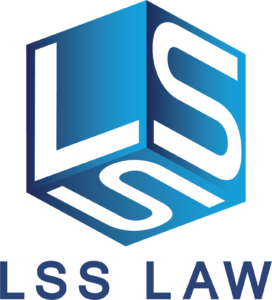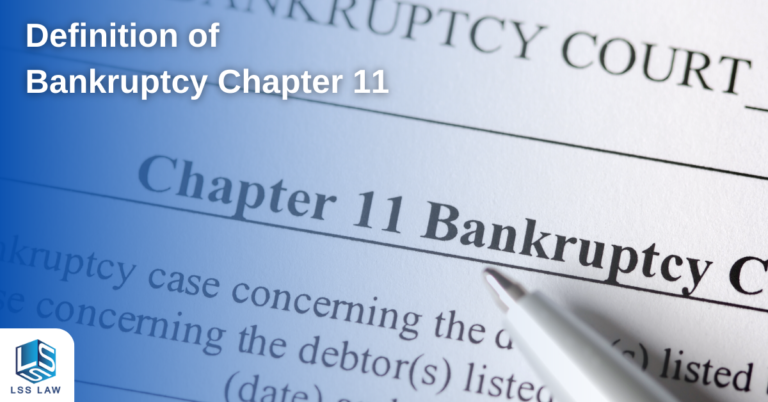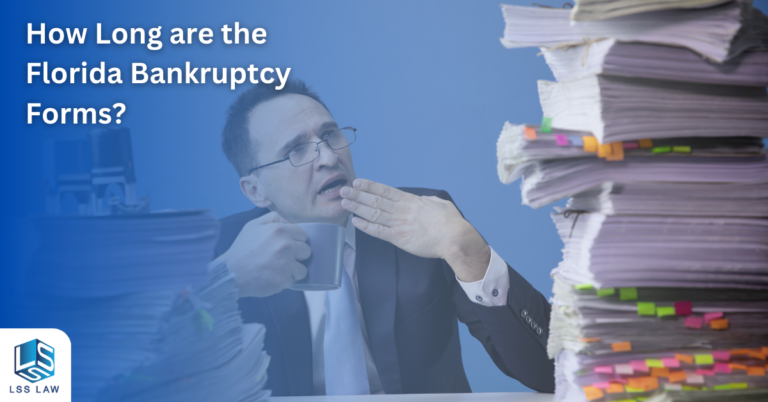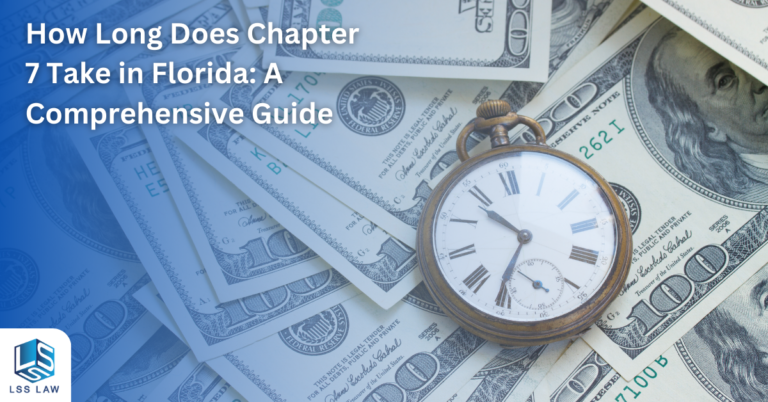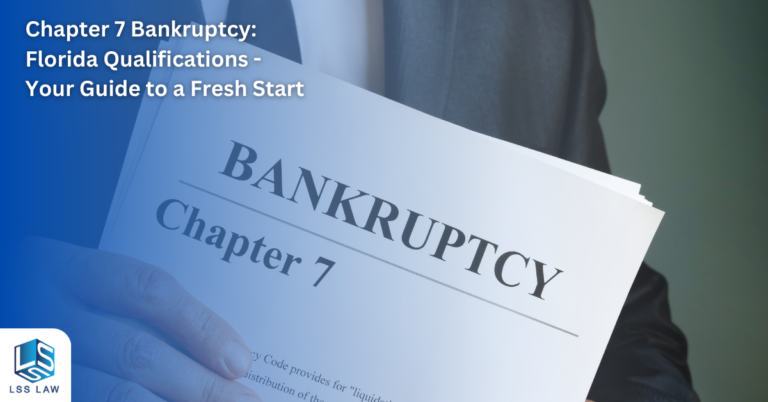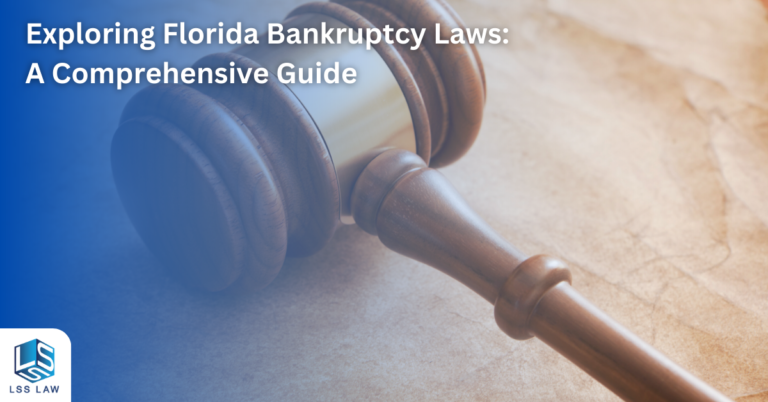Dealing with debt can be a daunting and overwhelming experience. But, it’s important to remember that there are options available to help you regain control of your financial situation. One such option, particularly for businesses, is Chapter 11 bankruptcy. In this article, we’ll explore the definition of bankruptcy Chapter 11, how it works, and how it can help businesses restructure their debts and continue operations.
What is Chapter 11 Bankruptcy?
Chapter 11 bankruptcy is a legal process that allows businesses (and sometimes individuals) to reorganize their debts and continue operations while working towards financial stability. Unlike Chapter 7 bankruptcy, which typically involves liquidation of assets, Chapter 11 focuses on restructuring the debtor’s financial obligations and business operations to create a manageable repayment plan for their debts.
How Does Chapter 11 Bankruptcy Work?

When a business files for Chapter 11 bankruptcy, an automatic stay is put in place, temporarily halting collection efforts, foreclosures, and lawsuits. This provides the debtor with some breathing room to focus on creating a reorganization plan.
The debtor remains in control of their business as a debtor in possession during the bankruptcy process, unless a trustee is appointed. This means they can continue operations and generate cash flow to help repay their debts.
A key part of the Chapter 11 bankruptcy process is the development of a reorganization plan. This plan must be submitted to the bankruptcy court and detail how the debtor intends to repay their creditors over time. Creditors are divided into classes based on the type of debt they hold and can vote to approve the reorganization plan.
Throughout the Chapter 11 process, the debtor must disclose all financial information to the court and their creditors. This transparency is crucial in ensuring that all parties involved have a clear understanding of the debtor’s financial situation and the proposed repayment plan.
In certain cases, non-essential assets may be sold to help repay creditors, and contracts and leases can be renegotiated to reduce expenses. The court may dismiss the bankruptcy case if requirements are not met or the proposed reorganization plan is not feasible. However, if the debtor successfully completes the Chapter 11 process, their remaining dischargeable debts are discharged, allowing the business to continue with a reduced debt burden.
The Benefits of Chapter 11 Bankruptcy for Businesses
Chapter 11 bankruptcy offers several advantages for businesses facing financial difficulties. By allowing the debtor to continue operations while restructuring their debts, Chapter 11 can help preserve jobs and maintain important relationships with suppliers and customers.
Additionally, the automatic stay provided by Chapter 11 filing can buy businesses some much-needed time to regroup and develop a feasible reorganization plan. This can be particularly helpful for businesses facing industry downturns or other external factors that have contributed to their financial struggles.
While Chapter 11 bankruptcy can be complex, time-consuming, and costly, the potential benefits for businesses in need of financial reorganization make it a strategic option worth considering. By working with a qualified bankruptcy attorney, businesses can navigate the Chapter 11 process and emerge with a more sustainable financial situation, ready to face the future.
In conclusion, understanding the definition of bankruptcy Chapter 11 is crucial for businesses facing financial difficulties. By providing an opportunity to restructure debts and continue operations, Chapter 11 can be a valuable tool for businesses seeking a fresh start.
Navigating the Chapter 11 Process with a Bankruptcy Attorney
Working with a qualified bankruptcy attorney is essential when considering Chapter 11 bankruptcy. An experienced attorney will guide you through the complex bankruptcy process, ensuring that all necessary paperwork is filed correctly and on time. They will also help you develop a feasible reorganization plan that meets the requirements of the bankruptcy court and is agreeable to your creditors.
Additionally, a bankruptcy attorney can provide valuable advice on how to manage your business operations during the reorganization process, helping you to reduce expenses, increase revenue, and ultimately emerge from Chapter 11 with a stronger financial footing.
Small Business Reorganization Act: A Streamlined Process for Small Businesses
Recognizing the unique challenges faced by small business owners, Congress passed the Small Business Reorganization Act (SBRA) in 2019. This legislation created a streamlined Subchapter V process within Chapter 11 bankruptcy, specifically designed for small businesses with less than $7.5 million in debt.
The Subchapter V process simplifies the Chapter 11 bankruptcy process for small business debtors, reducing costs and shortening the time it takes to complete the reorganization. Some key features of Subchapter V include:
- An expedited reorganization process, with the debtor required to submit a repayment plan within 90 days of filing.
- No requirement for a creditors committee, reducing administrative costs and complexity.
- The appointment of a Subchapter V trustee, who works with the debtor to help develop and implement the reorganization plan.
- A more streamlined process for confirming a reorganization plan, with no need for a separate disclosure statement.
By opting for the Subchapter V process, eligible small business owners can take advantage of a more efficient and cost-effective path to financial reorganization.
Rebuilding Credit After Chapter 11 Bankruptcy
While declaring bankruptcy may initially have a negative impact on your credit rating, it is important to remember that this is not a permanent situation. As you work through the Chapter 11 process and successfully implement your reorganization plan, you will have the opportunity to rebuild your credit over time.
To improve your credit rating after bankruptcy, it’s essential to follow the recommendations of your bankruptcy attorney and credit counselor. This may include:
- Paying all remaining debts on time and in full.
- Establishing a responsible credit history by using credit wisely and maintaining low balances on credit cards.
- Continuously monitoring your credit report and addressing any inaccuracies.
- Developing a budget and sticking to it, ensuring that you can meet all of your financial obligations.
With dedication and perseverance, it is possible to rebuild your credit and emerge from Chapter 11 bankruptcy with a stronger financial foundation for your business.
Different Roles in Chapter 11 Bankruptcy
Credit Counseling
Before filing for Chapter 11 bankruptcy, it is important to undergo credit counseling from an approved agency. Credit counseling is a valuable resource that provides guidance on managing your debts and creating a budget to help you regain control of your financial situation.
During credit counseling, a certified credit counselor will review your financial situation, discuss your options, and help you develop a plan to address your debts. This process can help you to better understand the implications of filing for bankruptcy and ensure that you are fully informed before making such an important decision.
While credit counseling is a requirement for personal bankruptcies like Chapters 7 and 13, it is not a mandatory step for Chapter 11 filings. However, it is still highly recommended as it can provide valuable insights and strategies for managing your business’s finances during the reorganization process.
Court Approval
Throughout the Chapter 11 bankruptcy process, certain actions and decisions made by the debtor require court approval. This oversight ensures that the reorganization plan is fair and equitable to all parties involved, including creditors and the debtor.
Some actions that may require court approval during the Chapter 11 process include:
- Obtaining new financing or loans to continue business operations during the reorganization.
- Selling assets that are not considered essential to the ongoing operation of the business.
- Modifying or rejecting contracts and leases to reduce expenses and liabilities.
- Paying critical vendor claims to maintain essential business relationships.
By seeking court approval for these actions, the bankruptcy court ensures that the debtor’s decisions are in the best interests of all parties involved and that the reorganization plan has a higher likelihood of success.
Creditors Committee
In a Chapter 11 bankruptcy case, a creditors committee may be appointed to represent the interests of unsecured creditors. This committee is typically composed of the largest unsecured creditors, who work together to protect their interests during the reorganization process.
The creditors committee plays an important role in the Chapter 11 process by:
- Reviewing the debtor’s financial information and reorganization plan.
- Negotiating with the debtor to modify the plan in a way that is more favorable to unsecured creditors.
- Monitoring the debtor’s business operations and financial affairs during the reorganization process.
- Participating in court hearings and providing input on important decisions, such as the approval of the reorganization plan.
By working together as a committee, unsecured creditors can have a stronger voice in the bankruptcy process and ensure that their interests are adequately represented.
The Process of Filing a Chapter 11 Bankruptcy Petition
Filing a Chapter 11 bankruptcy petition is the first step in initiating the bankruptcy process. To begin, the debtor, with the assistance of a qualified bankruptcy attorney, must prepare and submit a bankruptcy petition to the appropriate bankruptcy court. The petition includes detailed information about the debtor’s financial situation, such as assets, liabilities, income, and expenses.
In addition to the bankruptcy petition, the debtor must also submit various schedules and statements that provide a comprehensive overview of their financial affairs. These documents are crucial for the bankruptcy court and creditors to gain a clear understanding of the debtor’s financial situation and evaluate the viability of the proposed reorganization plan.
Once the bankruptcy petition is filed, an automatic stay goes into effect, which temporarily halts collection efforts, foreclosures, and lawsuits against the debtor. This stay allows the debtor to focus on developing a reorganization plan and negotiating with creditors without the added pressure of ongoing collection actions.
It is essential to work with a qualified bankruptcy attorney during the petition process to ensure that all necessary documents are accurately prepared and submitted to the court. Failure to provide complete and accurate information can result in delays or even dismissal of the bankruptcy case.
Creating and Implementing a Reorganization Plan in Chapter 11 Bankruptcy
A critical component of the Chapter 11 bankruptcy process is the development and implementation of a reorganization plan. This plan outlines how the debtor intends to restructure their debts, continue business operations, and repay creditors over time.
The debtor has an exclusive 120-day exclusivity period to propose a reorganization plan. During this time, only the debtor can submit a plan for the court’s consideration. If the debtor cannot propose a feasible plan within the exclusivity period, creditors may propose their own plans.
A successful reorganization plan must meet several requirements, including:
- Designating classes of claims based on debt type.
- Identifying if the plan will impair claims and explaining how the plan will alter the claims.
- Treating every entity in each class the same.
- Providing sufficient measures to implement the plan.
Creditors are divided into classes based on the type of debt they hold, and they can vote to approve or reject the reorganization plan. The court may confirm a plan over a creditor’s dissent, as long as the plan does not discriminate unfairly and is fair and equitable. This is known as a cram-down.
Once the reorganization plan is approved by the court and the required creditor classes, the debtor must implement the plan and begin repaying creditors according to the agreed-upon terms. Successful completion of the reorganization plan results in the discharge of remaining dischargeable debts, allowing the business to continue with a reduced debt burden and a more sustainable financial situation.
The Role of the Debtor in Possession in Chapter 11 Bankruptcy
In a Chapter 11 bankruptcy case, the debtor typically remains in control of their business operations as a debtor in possession. This means that the debtor continues to manage the day-to-day operations of the business while working to restructure their debts and implement the reorganization plan. The debtor in possession has a fiduciary duty to act in the best interests of the creditors and ensure that the business operations are conducted in a manner that maximizes the value of the debtor’s estate.
As a debtor in possession, the debtor has certain rights and responsibilities, including:
- Continuing to operate the business and generate cash flow to aid in the repayment of debts.
- Complying with all applicable laws, regulations, and reporting requirements.
- Seeking court approval for certain actions, such as selling assets, obtaining new financing, or entering into new contracts.
- Working with creditors and the bankruptcy court to develop and implement a feasible reorganization plan.
In some cases, the bankruptcy court may appoint a trustee to oversee the debtor’s operations and ensure compliance with the bankruptcy code. This typically occurs when there is evidence of fraud, mismanagement, or other concerns that warrant such an appointment. However, in most Chapter 11 cases, the debtor remains in control of their business operations as a debtor in possession.
Understanding the Role of Secured and Unsecured Creditors in Chapter 11 Bankruptcy
In a Chapter 11 bankruptcy case, creditors play a crucial role in the reorganization process. Creditors are divided into two main categories: secured creditors and unsecured creditors.
Secured creditors are those who hold a lien or security interest in the debtor’s property, such as a mortgage or a car loan. These creditors have a higher priority in the bankruptcy process, as their claims are backed by collateral. In a reorganization plan, secured creditors must be paid in full or provided with adequate protection to ensure the value of their collateral is not diminished during the bankruptcy process.
Unsecured creditors, on the other hand, do not hold any collateral to secure their claims. Examples of unsecured debt include credit card debt, medical bills, and personal loans. Unsecured creditors are often paid a percentage of their claims through the reorganization plan, depending on the debtor’s available assets and the priority of the claims.
During the bankruptcy process, unsecured creditors may form a creditors committee to represent their interests and participate in the reorganization process. This committee works with the debtor and the bankruptcy court to review the proposed reorganization plan, negotiate payment terms, and ensure that the best interests of the unsecured creditors are considered.
Both secured and unsecured creditors have the opportunity to vote on the proposed reorganization plan, and their approval is necessary for the plan to be confirmed by the court. By understanding the roles and priorities of secured and unsecured creditors in a Chapter 11 bankruptcy case, debtors can better navigate the reorganization process and work towards a successful outcome.
FAQ: Definition of Bankruptcy Chapter 11
We understand that navigating the intricacies of Chapter 11 bankruptcy can be overwhelming. To help you better understand this process, we’ve compiled a list of frequently asked questions and provided expert answers to guide you through this complex financial journey.
What is the main difference between Chapter 11 and other bankruptcy chapters?
Chapter 11 bankruptcy is primarily focused on business reorganization, allowing businesses to continue operations while restructuring their debts. In contrast, Chapter 7 bankruptcy involves liquidation of assets to pay off debts, and Chapter 13 bankruptcy is designed for individuals to reorganize their debts through a repayment plan.
How long does the Chapter 11 bankruptcy process take?
The duration of a Chapter 11 bankruptcy case can vary greatly, depending on the complexity of the debtor’s financial situation and the cooperation of creditors. Generally, the process can take anywhere from several months to several years to complete.
Can individuals file for Chapter 11 bankruptcy?
Yes, individuals can file for Chapter 11 bankruptcy if they have significant debt and do not qualify for Chapter 7 or Chapter 13 bankruptcy. However, it is more commonly used by businesses due to its complexity and expense.
How much does it cost to file for Chapter 11 bankruptcy?
Filing fees for Chapter 11 bankruptcy can be quite high, with an initial filing fee of $1,738 and additional administrative fees. Additionally, legal fees can be substantial due to the complexity of the process. It is essential to consult with a qualified bankruptcy attorney to determine the potential costs and benefits of filing for Chapter 11 bankruptcy.
What happens to my personal assets if I file for Chapter 11 bankruptcy as a small business owner?
If you operate your business as a sole proprietorship, your personal assets may be at risk in a Chapter 11 bankruptcy. However, if your business is structured as a corporation or limited liability company (LLC), your personal assets are generally protected from the business’s debts.
Can my business continue to operate during the Chapter 11 bankruptcy process?
Yes, businesses can continue to operate during the Chapter 11 bankruptcy process. In fact, one of the main benefits of Chapter 11 is that it allows businesses to restructure their debts while maintaining operations, preserving jobs, and maintaining relationships with suppliers and customers.
Contact Us to Learn More About Chapter 11 Bankruptcy

If you or your business is struggling with debt, it’s important to explore your options and determine the best course of action. Our experienced bankruptcy attorneys at LSS Law are here to help you navigate the complex world of Chapter 11 bankruptcy and work towards a brighter financial future. To schedule a Chapter 11 consultation, call us at (954) 466-0541 or contact us online. Don’t let debt hold you back – reach out to us today and take the first step towards financial freedom.
